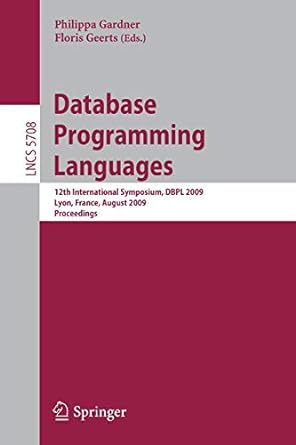Question
'THIS IS ALL FOR FUNCTION 1' * WE ARE USING CODE WARRIOR IDE HENCE WHY THERE ARE DIFFERENT FILES * In this exercise, you will
'THIS IS ALL FOR FUNCTION 1'
*WE ARE USING CODE WARRIOR IDE HENCE WHY THERE ARE DIFFERENT FILES*
In this exercise, you will write two functions. Each function will check bits and control bits on the microprocessor trainer. 1. The first function will use traditional C bit field logic instructions to read and control I/O bits 2. The second function will use modern C bit field structure to read and control I/O bits. The completed project will include header (.h) files you create and add to the program. You will define your own I/O ports in this program, so you will need to remove the MC9S12XEP100.h file from your project. o To do this: Expand Libs in the project explorer and then right-click on MC9S12XEP100.h to remove it from the project. o Then, in the main.c file, (once you remove the MC9S12XEP100.c file) comment out the #include derivative.h file. Otherwise you will get multiple definition errors.
You will write your main logic in the main.c file
Your completed project should have the following files added: o ports.h: file to hold your I/O port assignments o defs.h: file to hold your bit definitions o protos.h; file to hold your prototype definitions o Each of these files should comments, including a commented header and brief comment on file purpose
The program code will check the DIP switches at port B (address 0x01) and according to the state of the switches, will update the LEDs at port C (address 0x04) o You must come up with appropriate names for your port declarations Note: Be sure to make all bits of port C outputs by writing 0xff to its data direction register (address 0x06). Code operation example: if bit 0 of the switches is high, set bit 7 of the LEDs to a high without affecting other LEDS states. If bit 0 of the switches is low, write bit 7 of the LEDs low without affecting other LEDS states. Do the same for the remaining switches (bits 1-7). o The bits should track as follows: Bit 0 Switches => Bit 7 LEDs
Bit 1 Switches => Bit 6 LEDs Bit 2 Switches => Bit 5 LEDs Bit 3 Switches => Bit 4 LEDs Bit 4 Switches => Bit 3 LEDs
Both function versions are called from the endless loop inside of the main function, so it loops continuously, updating LEDs as you flip switches. 1. Write the first function version as instructed in Function Version 1: Traditional C Bit Fields, test it, if it works as instructed, demonstrate to Instructor or TA, then 2. Write the second function version as instructed in Function Version 2: Bitfield Structures, test it, then demonstrate to Instructor or TA. Note: do not delete the code from function version 1, just comment it out. When completed, you should be able to run either function version by commenting out the unnecessary code from the other function version. Both functions should produce identical logic I/O behavior. Test each function version by flipping each switch, and combinations of several switches, to see if the correct LED(s) light. A series of if else statements should be used. Do not use the if else- if statement since multiple switches may be on at the same time. Make sure you understand the previous sentence. Put your bit definitions in a file called defs.h. Put your port declarations in a file called ports.h. Put your function declarations in a file called protos.h For this assignment write your functions in the main.c file and you are required to write these functions below the main function. 1. Function Version 1: Traditional C Bit Fields (#defines and Bitwise Logic Instructions) The function that uses Traditional C bit fields logic instructions should check each switch individually and then write the state of that switch to the tracked LED. For each switch of PORTB you can use either simple if else decision blocks. if(PORTB & BIT_0) // test: is switch 0 high? { PORTC |= BIT_7; // if switch 0 is high, set LED bit 7 } else { PORTC &= ~BIT_7; //if switch 0 is low, clear LED bit 7 } In your defs.h header file, use define statements to specify values for BIT_0 BIT_7. Example: #define BIT_0 0x01 In your ports.h header file, Define PORTB, PORTC and DDRC. Use the proper ANSI C coding standard as discussed in Lecture. Example: #define PORTB (*(volatile unsigned char*)(0x01)) Bit 5 Switches => Bit 2 LEDs Bit 6 Switches => Bit 1 LEDs Bit 7 Switches => Bit 0 LEDs
Step by Step Solution
There are 3 Steps involved in it
Step: 1

Get Instant Access to Expert-Tailored Solutions
See step-by-step solutions with expert insights and AI powered tools for academic success
Step: 2

Step: 3

Ace Your Homework with AI
Get the answers you need in no time with our AI-driven, step-by-step assistance
Get Started


